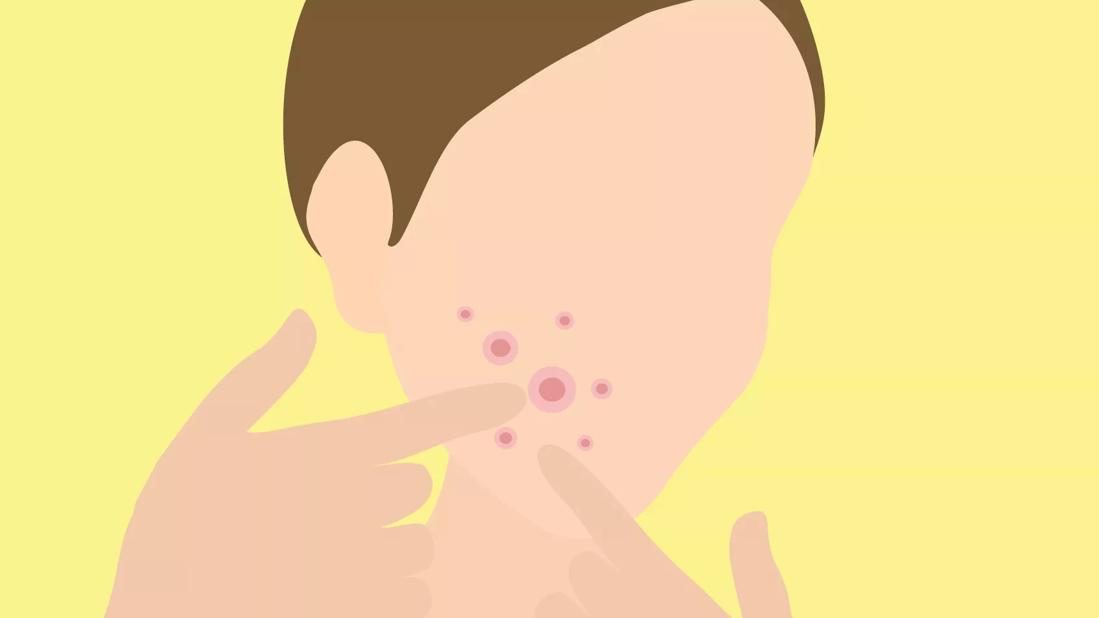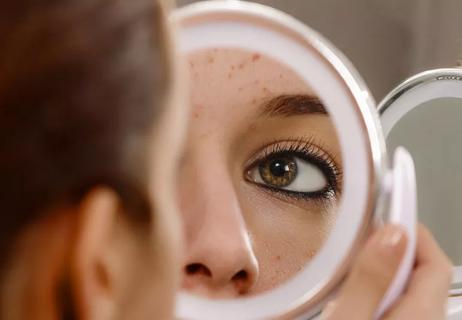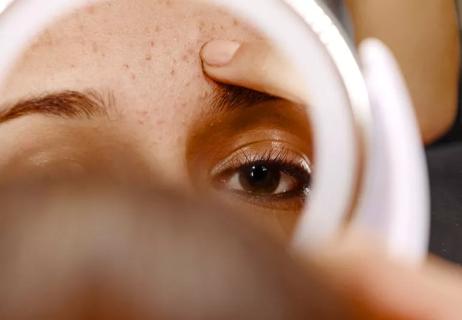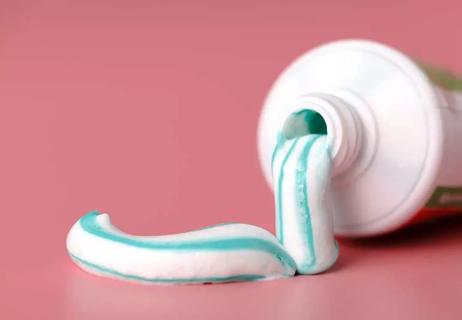Clean hands and gentle pressure are critical — but it’s better to leave those zits alone

Zits. Pimples. Acne. No matter what name you choose to use, odds are you’ve looked in the mirror and seen one of these angry blemishes — and then decided to take matters into your own hands.
Advertisement
Cleveland Clinic is a non-profit academic medical center. Advertising on our site helps support our mission. We do not endorse non-Cleveland Clinic products or services. Policy
Popping zits is just so … well, irresistible. Just a little squeeze results in that oh-so-gratifying release of the gunk inside. Doctors call the process extraction. Many people just call it satisfying.
But know this: Pimple-popping is not a healthy practice and could damage your skin if done incorrectly.
“People tend to get in trouble because they start extractions, and it becomes a habit,” says dermatologist Melissa Piliang, MD. “It can cause more problems than good, including inflammation and acne scars.”
Now, let’s address a reality of life: Despite any discouraging words, you might still be determined to paw away at that pimple until it finally gives up what’s inside. If so, here’s the best way to go at it.
Whether you’re dealing with a blackhead, whitehead or pustule, the first step is always the same: Wash your hands and face.
Some early prep work can help the process, too. You can pop pimples far more easily if you loosen the plug first. Over-the-counter (OTC) medications such as retinoids, benzoyl peroxide or salicylic acid can effectively open up your pores.
At this point, a little Acne 101 seems in order. (Before you start squeezing away at any blemishes, you should understand why they happen, after all.)
Advertisement
Basically, that pimple is a blocked pore. It can be filled with hair, sebum (an oily substance), bacteria or dead skin cells. As the gunk and oils build-up, the tell-tale bumps pop up on your skin … no doubt at the worst possible time. (Picture day!)
Now, let’s dig into the popping process, which is slightly different for each type.
After using an OTC medicine, popping a blackhead is fairly simple. Gently apply pressure to the outer edges with either your fingers or cotton swabs.
The plug should pop out easily, as blackheads are technically open pores, says Dr. Piliang.
Whiteheads are closed pimples, so you’ll need to create an exit point for the plug. Sterilize a needle with alcohol and gently prick the top of the pimple.
After making the opening, apply pressure in the same way you would to extract a blackhead.
A pustule sits deeper beneath your skin, so it requires a bit more work. Use a hot compress to draw the pus to the surface before applying pressure. As with a whitehead, you may need to use a sterilized needle to open an exit.
Stop the process if your popping attempt isn’t immediately successful. “If nothing comes out, wait a while,” says Dr. Piliang. “If you try to manipulate and squeeze it too much, you will only make the problem worse.”
So, you’ve popped the offending pimple and what’s left behind may be a leaking, oozing hole. Now what?
First, wash your hands and face to get the ick off. Applying an antibiotic ointment can help keep bacteria at bay. (If seeing the zit created some angst, you really don’t want to see what a follow-up infection would look like.)
There are special products available, too. A “pimple patch” or “zit sticker” contains a healing gel called hydrocolloid that can help with skin repair. It can help your pimple-popping wound shrink and become less inflamed.
Picking at blemishes comes with risks. Being too aggressive with your popping attempts could cause skin inflammation or long-term scarring. It could also stretch your pores, permanently making them bigger.
“You could take something small and not noticeable to someone else and make it a big, red bloody mess,” says Dr. Piliang says.
Pimple popping is, by far, the most popular way of dealing with these forms of acne, Dr. Piliang says. But working with your dermatologist is a much better method that’s safer for your skin in the long run.
“It’s a good idea to see a dermatologist who can advise you on how best to treat your acne,” she advises. “They can get you on a regimen to treat the existing blemishes and prevent new ones from coming up.”
Advertisement
Learn more about our editorial process.
Advertisement

‘Zit stickers’ can help heal a new or popped pimple, but they’re limited when it comes to managing acne

Benzoyl peroxide spot treatments are the gold standard, but they’re not the only game in town

Popping these pimples is not an option

It can actually make your blemish worse, not better

Early attention to skin wounds can help minimize their appearance later

Several conditions, like vitiligo and fungal infection, can cause a loss of pigmentation, leading to white spots or patches on your skin

Moisturizing, running a humidifier and adjusting your showers may help keep itchiness and irritation at bay

Glycolic acid benefits skin tone, texture and pigmentation by exfoliating dead skin

The best parenting style balances enforcing rules and showing plenty of love

Tips include cutting back on sugar, focusing on exercise and managing stress

It can be harder to let go when you’ve invested time, energy and emotions — but it might be the healthier choice long term